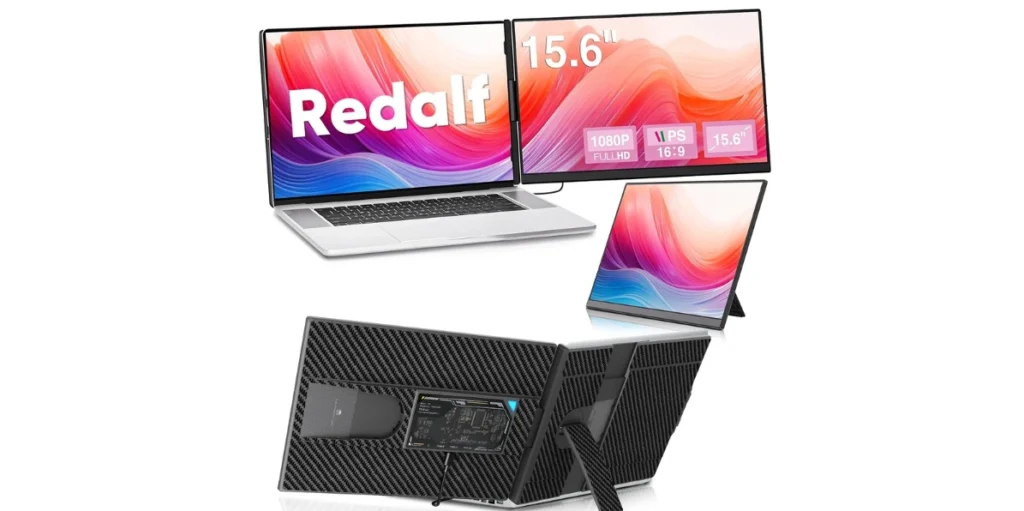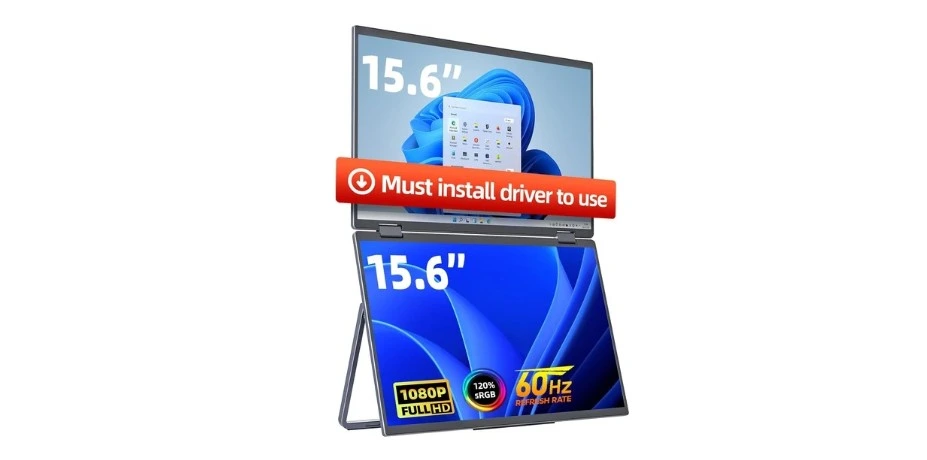Have you ever found yourself needing more screen space while working on your laptop? If you’re like many professionals, students, or digital nomads, a single laptop screen often isn’t enough to manage multiple tasks efficiently. That’s when a lightweight laptop screen extender can become your best ally in maintaining productivity on the go.

Understanding Lightweight Laptop Screen Extenders
A laptop screen extender is a secondary display that connects to your laptop, providing additional screen real estate. These extenders are particularly useful for multitasking, presenting, or working on complex projects that require multiple windows or applications to be open simultaneously.
Benefits of a Laptop Screen Extender
There are several advantages to using a laptop screen extender:
- Improved Productivity: With more screen space, you can keep multiple applications open at once, reducing the need to constantly switch between tabs.
- Enhanced Multitasking: Simultaneously manage emails, documents, and web pages more effectively.
- Portability: Today’s screen extenders are designed to be lightweight and easy to carry, perfect for those who work remotely or travel frequently.
Features to Look For
When shopping for a laptop screen extender, consider the following criteria to find the best option for your needs:
- Weight: Since portability is a critical feature, opt for an extender that is lightweight.
- Size: Ensure the screen fits well with your laptop’s dimensions.
- Resolution: A higher resolution will provide better clarity and a smoother viewing experience.
- Connectivity: USB-C or HDMI ports are common; check for compatibility with your laptop.
- Power Source: Some extenders are powered via USB, while others might need an external power source.
Top Considerations for Choosing the Perfect Screen Extender
Portability
The primary benefit of a laptop screen extender is its portability. Look for models that are slim, lightweight, and come with a durable carrying case. A good extender should seamlessly fit into your laptop bag without adding significant bulk or weight.
Display Quality
High definition and clear display are crucial for reducing eye strain during prolonged use. Aim for an extender with at least Full HD (1920×1080) resolution. For creative professionals, higher resolutions like 4K might be desirable, though they can be more expensive and less portable.
| Aspect | Consideration |
|---|---|
| Weight | Lightweight and portable |
| Size | Match your laptop and easy to carry |
| Resolution | At least Full HD (1920×1080) for clarity |
| Connectivity | USB-C or HDMI compatibility, depending on your laptop |
| Power Source | Preferably USB-powered for convenience |
Connectivity Options
Most modern laptops support USB-C and HDMI connections. Some extenders even come with their own USB hubs, allowing you to connect additional peripherals. Ensure the extender is compatible with your laptop’s ports to avoid purchasing extra adapters.
Power Source
USB-powered extenders are generally more convenient as they don’t require an additional power cord. This feature is especially beneficial for travelers who need to minimize the number of items they carry.
Stand and Adjustability
Ergonomics play a big role in the usability of a screen extender. Look for models with adjustable stands or built-in mounts. These features can help position the screen at a comfortable angle, reducing neck and eye strain.
Popular Lightweight Laptop Screen Extenders
Based on the above criteria, the following models are frequently recommended for their superior performance and portability:
| Model | Weight | Resolution | Connectivity | Price Range |
|---|---|---|---|---|
| ASUS ZenScreen | 1.7 lbs | 1920×1080 | USB-C, Micro-HDMI | $$ |
| Mobile Pixels Duex | 1.6 lbs | 1920×1080 | USB-C, USB-A | $$ |
| Lenovo ThinkVision | 1.3 lbs | 1920×1080 | USB-C | $$ |
| AOC e1659Fwu | 2.4 lbs | 1366×768 | USB 3.0 | $ |
ASUS ZenScreen
The ASUS ZenScreen is a popular choice due to its lightweight design and high-resolution display. The 1.7 lbs weight makes it incredibly portable, and its various connectivity options make it compatible with most laptops.
Mobile Pixels Duex
The Mobile Pixels Duex provides great flexibility with its lightweight build and easy attachment system. At just 1.6 lbs, it’s even lighter than the ZenScreen, and the USB-C and USB-A compatibility gives plenty of connection options.
Lenovo ThinkVision
Lenovo’s ThinkVision also scores high in the portability department, weighing only 1.3 lbs. Its simplistic design and USB-C connectivity make it an easy add-on that won’t clutter your workspace.
AOC e1659Fwu
While slightly heavier at 2.4 lbs, the AOC e1659Fwu is a budget-friendly option with USB 3.0 connectivity. Its lower resolution may not be ideal for everyone, but it’s a great choice if you’re looking to save money.
Setup and Usage
Initial Setup
Setting up a laptop screen extender is generally straightforward. Most models are plug-and-play, requiring no additional software. Simply connect the extender to your laptop via the appropriate port (USB-C, HDMI, etc.), and it should automatically extend your display.
Adjusting Display Settings
Once connected, you can adjust the display settings to fit your needs. Here’s a quick guide:
- Windows: Right-click on your desktop and select “Display settings.” Here, you can choose how you want to use the extended display (duplicate, extend, or show only on one screen).
- Mac: Go to “System Preferences” -> “Displays.” You can arrange your displays and set your preferred display mode.
Ergonomics and Workspace Organization
An adjustable stand or built-in mount can make a huge difference in setting up an ergonomic workspace. Ensure the extender is at eye level and that you maintain a comfortable distance between the screens to minimize strain.

Maintenance and Troubleshooting
Regular Cleaning
Keeping the screen clean is essential for the longevity of your extender and for maintaining image clarity. Use a microfiber cloth and a screen-safe cleaner to gently wipe down the display.
Firmware and Software Updates
Some extenders come with their own software that may require updates. Keeping these up-to-date ensures the best performance and compatibility with your laptop.
Common Issues and Solutions
| Issue | Solution |
|---|---|
| No Signal Detected | Ensure all cables are securely connected and check for driver updates |
| Display Flickering | Try using a different port or cable, and ensure the extender’s drivers are up-to-date |
| Resolution Issues | Adjust display settings on your laptop |
| Power Issues | Confirm that the power source (USB port or external) is functioning properly and providing enough power |
Conclusion
In the quest for the perfect lightweight laptop screen extender, the right choice depends on balancing your unique needs for portability, display quality, and connectivity. With so many options available, there’s certainly an extender that fits your workflow and enhances your productivity.
Choose an extender that aligns with your work habits and preferences, and you’ll find that additional screen real estate can make all the difference in managing your tasks efficiently and comfortably. Whether you’re a student, professional, or frequent traveler, investing in a high-quality screen extender is a decision that will pay off in both convenience and productivity.



